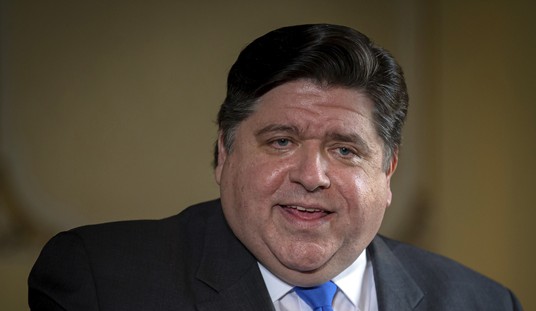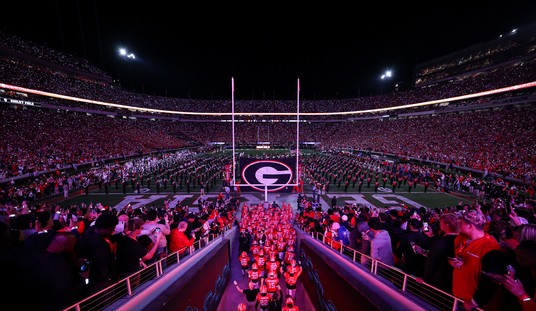Four more states held primary elections this past week: Michigan, Kansas, Missouri, and Tennessee. The storyline that emerged in many news reports was that the tea party movement had a bad night, or that Sarah Palin lost her magic endorsement touch (at least in the Kansas GOP Senate primary contest).
It is hard to tell from week to week which storyline the media want to use with regard to the tea party movement. After the health care bill was passed, the party line was that the tea party movement is racist and homophobic, as proven by comments allegedly made to several Democratic members of the House as they walked into the chamber to vote.
Another line that has been pursued is that the tea party movement has taken over the GOP, which is in danger of becoming a racist party. This is presumably confirmed by the high percentage of whites among tea party members, Republican voters, and Republican candidates for office (lesson: it is OK to be white if you vote for or run as a Democrat). And finally, there is this week’s theme: that the tea party movement is overrated and has already begun to fade as a force in American politics.
On the other hand, one report this week suggested that Democrats are more than happy to work with tea party candidates, at least if it means enabling them to run as third-party candidates to siphon off votes that would otherwise go to GOP candidates in close races.
The bigger picture of the four contests this week was captured by Sean Trende in an article for RealClearPolitics. All year there has been a huge enthusiasm gap between conservatives and Republican voters and liberals and Democratic voters. This was validated again this week.
During the primary season in the 2008 campaign, the tight contest between Hillary Clinton and Barack Obama was used as an explanation for the very high turnout throughout the Democratic primaries. Each of the two candidates had a strong appeal to blocs of voters — Clinton to women, blue-collar voters, and Hispanics; Obama to the intelligentsia, students, and African Americans. The GOP fight ended much earlier than the Obama-Clinton match, and by March, John McCain was the clear winner.
But even during the competitive phase of the GOP primary race, GOP turnout lagged far behind Democratic turnout. The Democratic contest drew record turnouts for a primary in state after state. It is obvious in retrospect that voters were turning out for the Democratic primaries because they thought that the winner of this contest would be the next president. Voters were more enthusiastic about both of the Democratic contenders than any of the Republicans who ran in 2008.
The GOP primaries this week drew turnout that was double or triple the Democratic primary turnout in the same states, and in individual House districts, the ratio of Republican primary voters to Democratic Party primary votes was at the highest level in years. And just as in 2008, the differential can not be explained away as solely a factor of more competitive primaries on the GOP side than on the Democratic side.
For much of the year, the Rasmusssen polling has shown a solid lead for the GOP in the generic vote for Congress. Other surveys did not confirm this differential. One explanation offered for why Rasmussen was an outlier was that his screen was of likely voters, while other pollsters were measuring registered voters. The subset of likely votes is generally more Republican leaning than that of registered voters. In the last few weeks, other pollsters, while still using a registered voter screen, have started showing substantial leads for the Republicans in the generic vote.
At the same time, President Obama’s net job approval rating has fallen into negative territory by about 5% on average. In other words, the enthusiasm gap between the voters from the two parties that was vividly on display in the primaries this week is confirmed by other measures.
It can even be argued that Sarah Palin did not have such a bad night Tuesday, when her choice for the GOP Senate nomination in Kansas, Tom Tiahrt, was defeated by Jerry Moran. Prior to Palin’s endorsement in the race, Moran had a 20-point lead on Tiahrt. On primary night, Moran won narrowly, by just under 5%. As with her other endorsements, Palin’s endorsement in Kansas seemed to move a slice of the GOP electorate and inject some energy into her candidate.
As to the conclusion by some that tea party candidates fizzled out in some of the races this week, it needs to be understood that the tea party remains a very decentralized and largely amorphous populist movement, far different than, say, the Obama ground organization that was created to register voters, track them, and then get them to vote for Obama in 2008. In local races, particularly in primaries, name recognition and financial resources generally matter more than position papers and endorsements.
The tea party movement does not have a national or even state superstructure that allocates campaign dollars, trains candidates, develops media for them, and buys ad time. The tea party movement is not at this point anything like the Club for Growth (or, for that matter, the SEIU) in terms of its campaign focus.
The big story this year — the enthusiasm gap between the parties — is in part a reflection of the grassroots activism of members of the tea party movement, many of whom are Republicans. But the biggest shift this year has been among independents who supported Obama and have now turned hard against both him and the Democrats in Congress. That shift appears to reflect, above all, economic anxiety as well as concern over rapidly rising federal spending, huge deficits, enormous new government regulatory powers, and an unemployment rate that seems stuck near double figures. These fears are shared by members of the tea party movement, which is why the GOP will likely do very well this year.









Join the conversation as a VIP Member